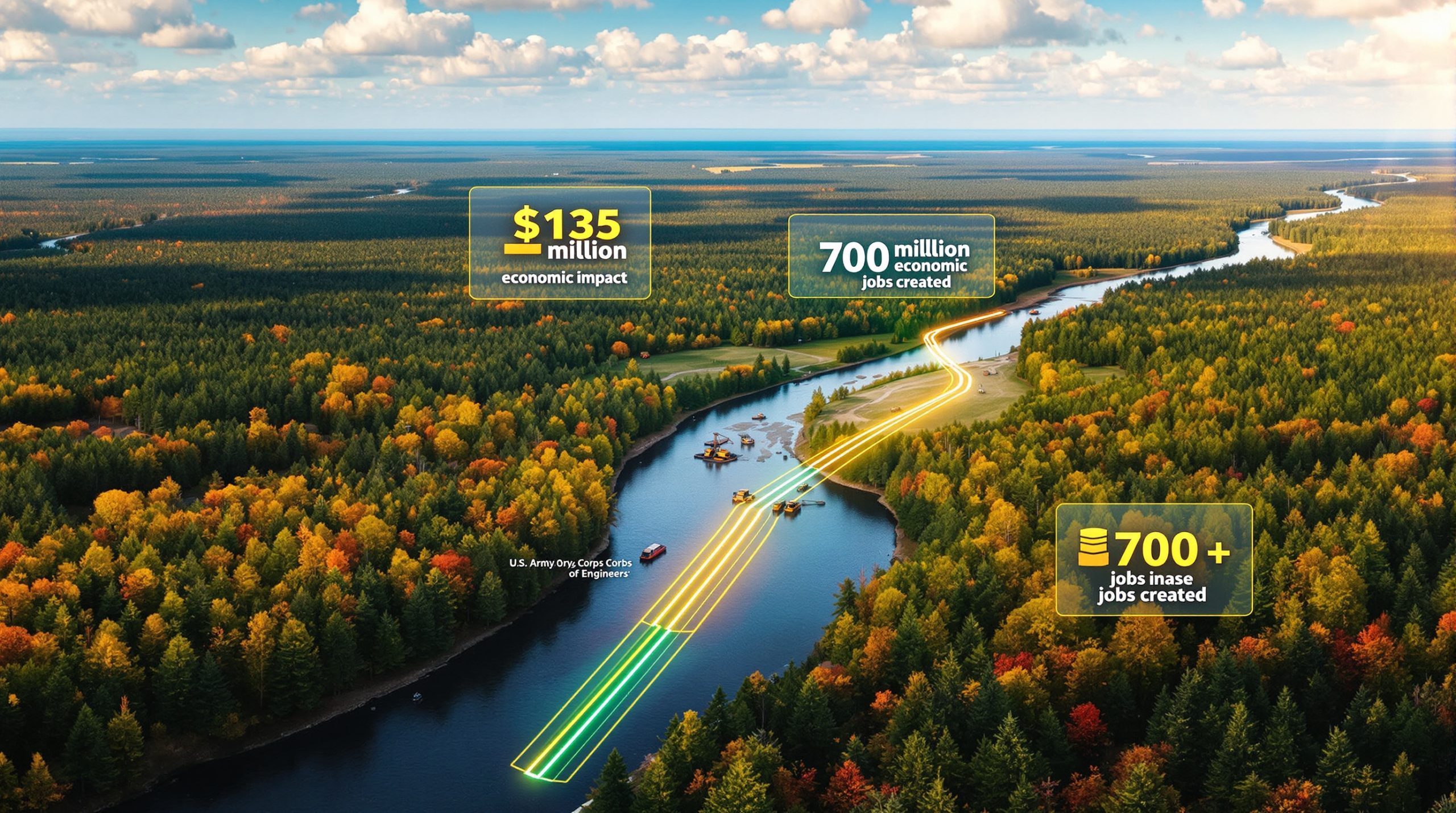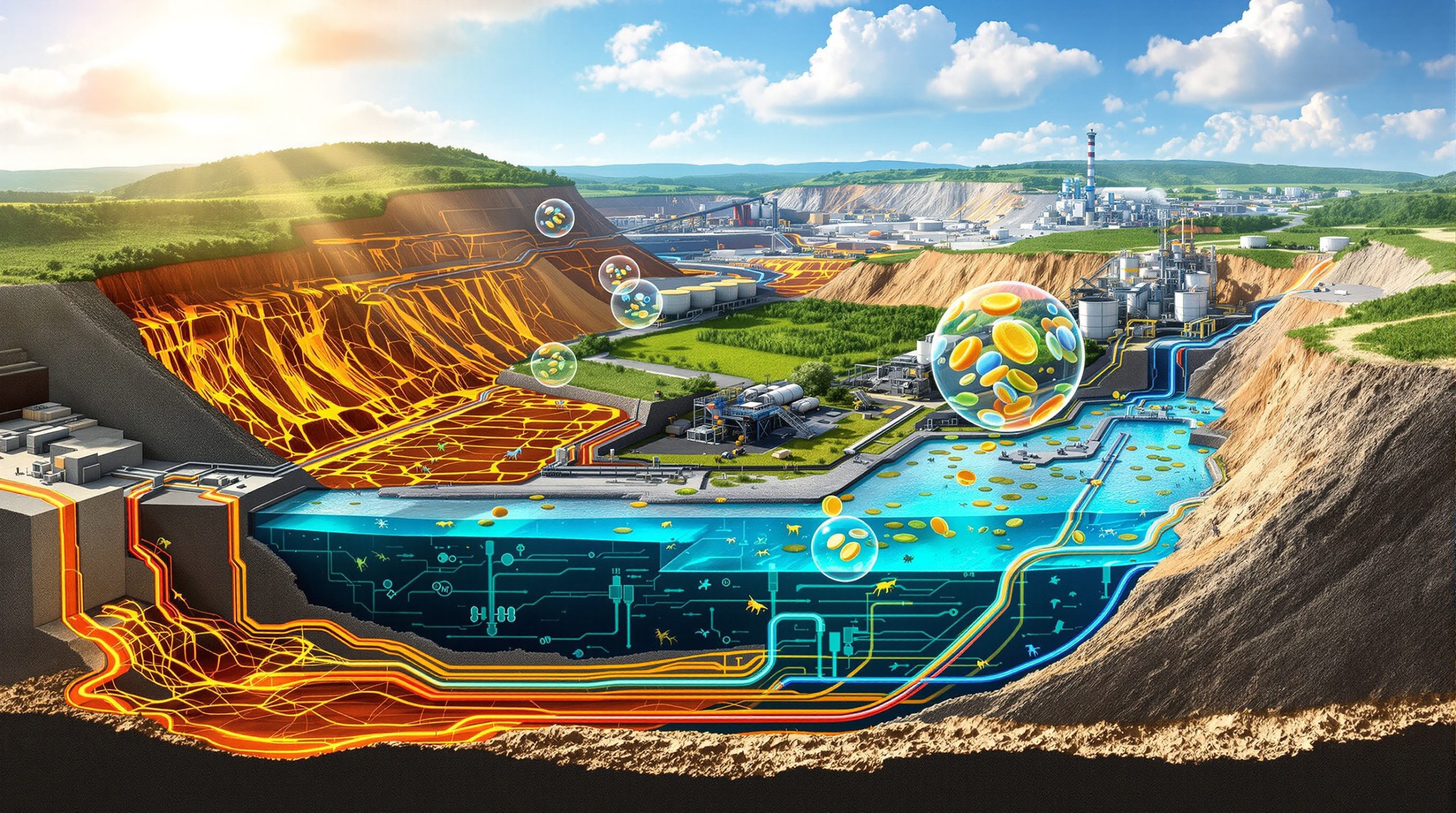What Happened to Myanmar's Rare Earth Production After the Earthquake?
The 7.7-magnitude earthquake that struck Myanmar in March 2025 has severely disrupted rare earth element (REE) production across the country's mineral-rich regions. Initial assessments indicate that mining operations in Kachin State, a critical hub for heavy rare earth element extraction, suffered significant damage to infrastructure and equipment. This natural disaster couldn't have come at a worse time for global supply chains, as Myanmar had emerged as a crucial supplier to China's dominant rare earth processing industry.
According to satellite imagery analysis, approximately 60% of mining facilities in the earthquake-affected regions have sustained structural damage. The most severe impacts are concentrated in areas where ion-adsorption clay deposits—the primary source of heavy rare earths—are mined through both formal and informal operations.
Extent of Damage to Mining Operations
Mining equipment valued at over $180 million has been damaged or rendered inoperable across Myanmar's rare earth sector, according to preliminary industry assessments. Excavators, separation equipment, and transportation vehicles essential to the extraction process lie damaged or inaccessible beneath collapsed structures and landslides.
"The earthquake has rendered many mining tunnels structurally unsound, creating immediate safety hazards that prevent resumption of operations," explains Dr. Min Thaung, a geological engineer formerly with Myanmar's Ministry of Natural Resources. "Even in areas where surface damage appears minimal, subsurface fracturing has compromised mine stability."
Transport infrastructure has been particularly affected, with key roads connecting mining regions to processing facilities and export hubs now impassable. The mountain roads in Kachin State, already challenging during normal conditions, have suffered landslides at over 30 critical junctures, effectively isolating mining operations from supply chains.
Immediate Supply Chain Impacts
The disruption has immediately affected raw material shipments to China, with customs data showing a 78% reduction in rare earth concentrate crossing the border in the weeks following the earthquake. Chinese refineries, which depend heavily on Myanmar's heavy rare earth feedstock, are reporting processing delays and concerns about meeting production targets.
"This earthquake may once again trigger concerns about the supply of rare earths, further exacerbating price volatility," warns Professor Wendong Zhang of Cornell University. The market has already responded, with prices for dysprosium oxide increasing 32% in the two weeks following the earthquake, reminiscent of the 38% price spike for neodymium following the 2022 Laotian earthquake.
Industry analysts note that the timing is particularly problematic as global stockpiles were already at historically low levels due to increased demand from clean energy technologies and defense applications in recent years.
How Important is Myanmar to China's Rare Earth Supply Chain?
Myanmar has quietly become the linchpin in China's rare earth supply strategy over the past decade. While much attention focuses on China's domination of processing capacity, the country has become increasingly dependent on imports of raw materials—particularly the heavy rare earth elements that are essential for high-performance technologies.
"Most people don't realize that China has been facing resource depletion in its own rare earth mines for years," explains Jon Hykawy, president of critical minerals advisory firm Stormcrow Capital. "Myanmar filled that gap at precisely the right moment."
Myanmar's Contribution to China's Rare Earth Imports
The numbers are striking: Myanmar supplied 44,000 tonnes of rare earth elements to China in 2024 alone, accounting for 57% of China's total rare earth imports. This marks a dramatic increase from just 25,000 tonnes in 2020, highlighting Myanmar's rapidly growing importance in the supply chain.
What makes Myanmar particularly valuable is the composition of its rare earth deposits. Unlike many sources that predominantly contain light rare earths, Myanmar's ion-adsorption clay deposits are rich in heavy rare earths—the most valuable and strategically important subset.
"Myanmar's southern Shan State and northern Kachin region contain some of the highest-grade ion-adsorption clay deposits outside of southern China," notes Dr. Kyaw Lin, a Myanmar geologist now based at the University of Tokyo. "These deposits form under very specific geological conditions that are relatively rare globally."
Strategic Minerals from Myanmar
Myanmar has become China's primary external source of dysprosium and terbium, two elements that command premium prices due to their critical applications. These elements are essential for enabling permanent magnets to function at high temperatures—a requirement for electric vehicle motors, wind turbine generators, and advanced military systems.
Dysprosium prices increased by 210% between 2020 and 2024, reflecting both growing demand and critical mineral shortages. Myanmar's mines produce ore containing approximately 600-1,200 parts per million of dysprosium, significantly higher than most alternative sources.
"When added to neodymium-iron-boron magnets, these elements prevent demagnetization at high temperatures," explains Hykawy. "Without dysprosium and terbium, the performance of these critical components would degrade rapidly under operating conditions."
What is China's Position in the Global Rare Earth Market?
Despite increased reliance on imported raw materials, China maintains an overwhelming dominance in the global rare earth supply chain through its unparalleled processing infrastructure.
"China's strategic vision regarding rare earths has always been about controlling the value chain, not just the mining," says Zhang. "They recognized decades ago that processing, not mining, creates the most value and leverage."
China's Market Dominance
The numbers tell a compelling story: China controls nearly 90% of global rare earth reserves, with particular strength in the complex separation processes required for heavy rare earths. The country hosts 92% of global rare earth separation facilities, according to the latest USGS assessments.
Chinese refineries can process rare earth concentrates into individual elements with 99.9999% purity—a level of refinement essential for high-technology applications. This processing capacity represents trillions of yuan in investment over decades, creating a formidable barrier to entry for potential competitors.
The Baotou Rare Earth Research Institute employs over 700 specialized engineers dedicated solely to improving rare earth processing technologies. This concentration of technical expertise has enabled China to maintain its lead despite higher environmental compliance costs in recent years.
China's Supply Chain Vulnerabilities
The Myanmar earthquake has exposed a strategic vulnerability in China's rare earth dominance. "China's processing strength is undermined if raw material inputs are restricted," explains Dr. Julie Adams, rare earth analyst at Benchmark Mineral Intelligence. "They've essentially outsourced their environmental liabilities while retaining processing control."
China has been implementing measures to address this vulnerability, including:
- Establishing the China Rare Earth Group in 2021 to consolidate industry control
- Increasing domestic exploration budgets by 45% in 2024
- Creating a strategic reserve system housing approximately 20,000 tonnes of key rare earths
- Investing in overseas mining projects through state-owned enterprises
However, these measures cannot immediately replace Myanmar's output, especially for heavy rare earths like dysprosium and terbium, where alternative sources face significant development timelines.
How Might This Disruption Affect Global Rare Earth Markets?
The earthquake's impact extends far beyond China and Myanmar, affecting technology supply chains and strategic mineral policies worldwide. Market analysts project a period of price volatility and potential shortages, particularly for technologies dependent on heavy rare earth elements.
Potential Market Responses
Dysprosium prices have already surged 32% since the earthquake, with additional increases of 15-25% projected by Q3 2025 if Myanmar's production remains significantly impaired. Terbium, even more scarce and essential for certain applications, has seen spot prices increase by 27% during the same period.
"The current price response is just the beginning," warns Zhang. "If Myanmar's production doesn't recover within six months, we could see cascading effects throughout technology supply chains."
Industry responses are developing rapidly:
- Japanese manufacturers are drawing down strategic reserves established after the 2010 rare earth crisis
- European automakers are exploring magnet designs that reduce heavy rare earth content
- Defense contractors are accelerating recycling programs for rare earth-containing components
- Investment in nascent rare earth mining projects outside China has increased by $1.2 billion in the month following the earthquake
Long-Term Strategic Implications
"China will be forced to diversify more," predicts Zhang. "This event may accelerate a shift that was already underway, with China looking to reduce dependency on any single external supplier."
The 32 active rare earth mining projects outside China will likely see accelerated development timelines and easier access to financing as a result of the Myanmar disruption. Projects in Australia, Canada, and the United States that were previously considered marginal may now become economically viable with higher rare earth prices.
Technology companies are also responding by reassessing material requirements:
- Tesla has accelerated development of switched reluctance motors that don't require rare earth magnets
- Wind turbine manufacturers are exploring high-temperature superconducting generators as alternatives
- Consumer electronics companies are investing in recycling technologies to recover rare earths from discarded devices
MP Materials' Mountain Pass mine in California, currently the only major non-Chinese source of rare earths, has announced plans to accelerate its Stage III development to include heavy rare earth separation capabilities by 2027, two years ahead of its original schedule.
Why Are Rare Earth Elements So Important?
Despite their relatively low profile in public awareness, rare earth elements serve as the foundation for modern technology. These 17 elements enable countless technologies that define contemporary life, from smartphones to missiles.
"The irony is that most people have never heard of elements they interact with daily," notes Hykawy. "Your smartphone contains eight different rare earth elements, each serving a specific function."
Applications of Rare Earth Elements
Rare earths enable an astonishing array of technologies:
- Neodymium, praseodymium, dysprosium and terbium create powerful permanent magnets used in electric vehicle motors, wind turbine generators, and hard disk drives
- Europium, terbium, and yttrium produce the colors in smartphone displays and energy-efficient lighting
- Lanthanum serves as a catalyst in petroleum refining and is used in camera lenses
- Cerium is used in catalytic converters and for polishing precision optical components
- Gadolinium enhances magnetic resonance imaging (MRI) capabilities in medical diagnostics
The defense sector depends particularly heavily on rare earths, with each F-35 fighter jet containing approximately 417 kg of rare earth-based components. These elements enable precision-guided munitions, radar systems, sonar technology, and communications equipment.
The Significance of Dysprosium and Terbium
Dysprosium and terbium, the elements most affected by the Myanmar disruption, play particularly critical roles in high-performance technologies.
Dysprosium's unique properties include an extremely high magnetic anisotropy field (170 kOe), which allows magnets to maintain performance at temperatures exceeding 150°C. This property is essential for electric vehicle motors, which operate at high temperatures that would demagnetize ordinary magnets.
Terbium, even more scarce, possesses a remarkable magnetic moment of 58.4 µB when alloyed with iron, enabling the development of extremely compact yet powerful magnetic components. A Tesla Model Y uses approximately 1.5 kg of heavy rare earths in its permanent magnet motors, with terbium accounting for about 200 grams of this total.
"What makes these elements so valuable isn't just their physical properties," explains Hykawy, "but the lack of viable substitutes. Engineers have tried for decades to develop alternatives with limited success."
What Are the Geopolitical Implications of This Disruption?
The Myanmar earthquake has exposed fault lines not just in the earth, but in global critical mineral strategies. Nations and corporations are now reassessing vulnerability to supply disruptions in a world where technology increasingly depends on rare earths.
Strategic Resource Competition
The disruption comes amid already heightened competition for critical minerals. The United States, European Union, Japan, and South Korea have all established strategic mineral initiatives in recent years, with rare earths at the center of these efforts.
"This event will accelerate the reconfiguration of global rare earth supply chains that was already underway," explains Dr. Elizabeth Morton, senior fellow at the Center for Strategic and International Studies. "The question isn't whether diversification will happen, but how quickly and at what cost."
Policy responses are already emerging:
- The U.S. Department of Defense has increased funding for domestic rare earth processing by $217 million
- The European Commission has proposed amendments to the Critical Raw Materials Act to streamline permitting for rare earth projects
- Japan's JOGMEC has announced a new $850 million fund for rare earth investments
- South Korea has expanded its strategic stockpiling program to include additional grades of rare earth materials
Myanmar's Position
Myanmar now finds itself in a complex position. The country's rare earth resources represent both an opportunity for economic development and a strategic asset in an increasingly resource-competitive world.
"Myanmar's geological endowment gives it significant leverage, but also places it in the middle of the critical minerals race," notes Zhang. "How the country rebuilds its mining sector after this disaster will have implications far beyond its borders."
The earthquake may prompt Myanmar's government to implement more stringent mining regulations and environmental controls, potentially reducing output even after physical recovery. The informal mining sector, which accounts for approximately 35% of production, faces particular uncertainty.
International aid for rebuilding mining infrastructure will likely come with conditions regarding regulatory oversight, environmental standards, and supply agreements, creating new dynamics in Myanmar's resource governance.
FAQ About Myanmar Earthquake and China's Rare Earth Supplies
What are rare earth elements and why are they important?
Rare earth elements are a group of 17 metallic elements that are essential components in many high-tech products, including smartphones, electric vehicles, wind turbines, and military equipment. Despite their name, most are relatively abundant in the Earth's crust but rarely found in concentrated, economically viable deposits.
How might the earthquake affect rare earth prices?
According to Professor Wendong Zhang of Cornell University, "This earthquake may once again trigger concerns about the supply of rare earths, further exacerbating price volatility." Prices for dysprosium and terbium, in particular, could see significant increases if Myanmar's production remains disrupted for an extended period. Historical precedents suggest price increases of 30-50% are possible within six months, as reported by Reuters.
Are there alternative sources for the rare earths that Myanmar supplies?
While other countries do produce rare earth elements, Myanmar has been particularly important for certain heavy rare earths like dysprosium and terbium. Australia's Browns Range and Canada's Strange Lake deposits contain similar elements but require significantly more processing. Developing alternative sources would require substantial investment and 3-5 years of development time, creating potential supply constraints in the interim.
The Fragility of Critical Mineral Supply Chains
The Myanmar earthquake serves as a stark reminder of the vulnerabilities in global supply chains for critical minerals. What began as geological tremors in a remote region of Myanmar now reverberates through global technology markets, highlighting the interconnected nature of resource dependence in the modern world.
As nations and industries increasingly rely on rare earth elements for advanced technologies, the resilience of these supply networks becomes a matter of economic and national security importance. The disruption caused by the Myanmar earthquake may ultimately accelerate a reconfiguration of global rare earth supply chains that creates more diverse and resilient sources for these critical materials.
The earthquake has revealed not just Myanmar's geological vulnerability, but the fragility of a system where a single natural disaster can affect technologies used by billions of people worldwide. As recovery efforts proceed, the global rare earth industry faces a watershed moment that will shape geopolitical investor strategies and kickstart what some analysts believe could be the next commodity super cycle for these essential materials.
Looking for Early Warning on the Next Mineral Supply Disruption?
Don't let events like the Myanmar earthquake catch you off guard – stay ahead with Discovery Alert's proprietary Discovery IQ model, which provides instant notifications on significant ASX mineral discoveries that could reshape global supply chains. Visit our discoveries page to understand how identifying major mineral discoveries early can lead to exceptional investment returns.




